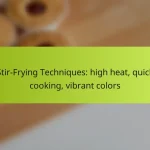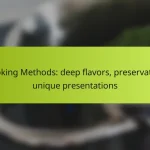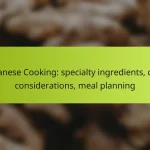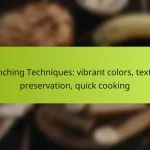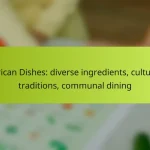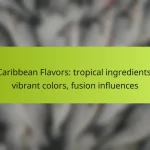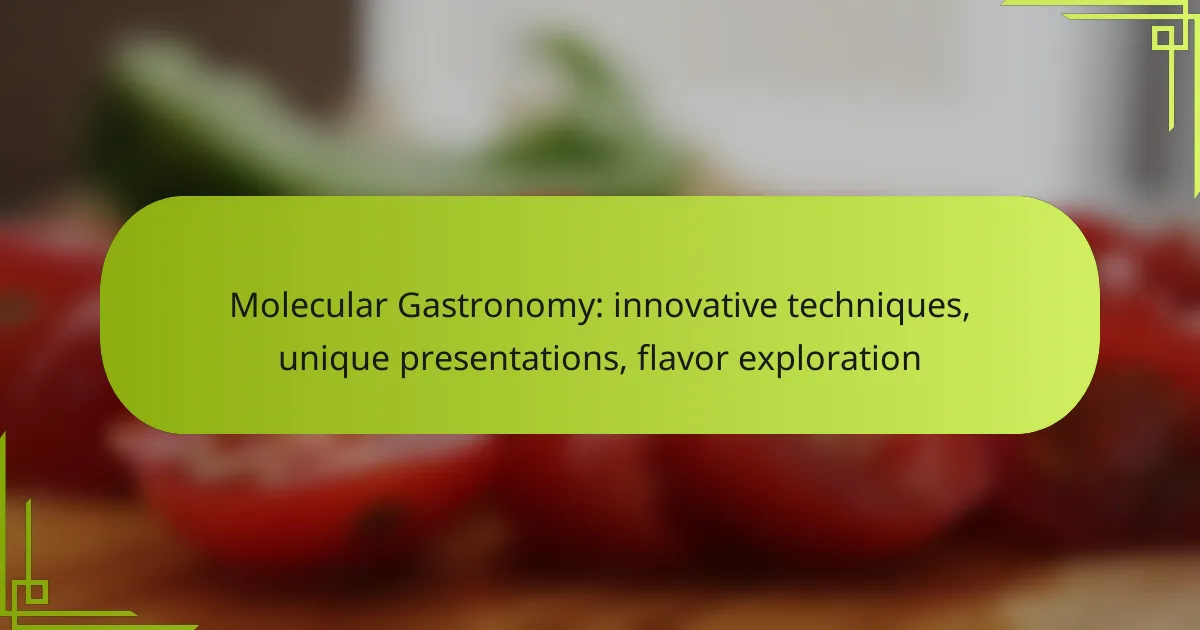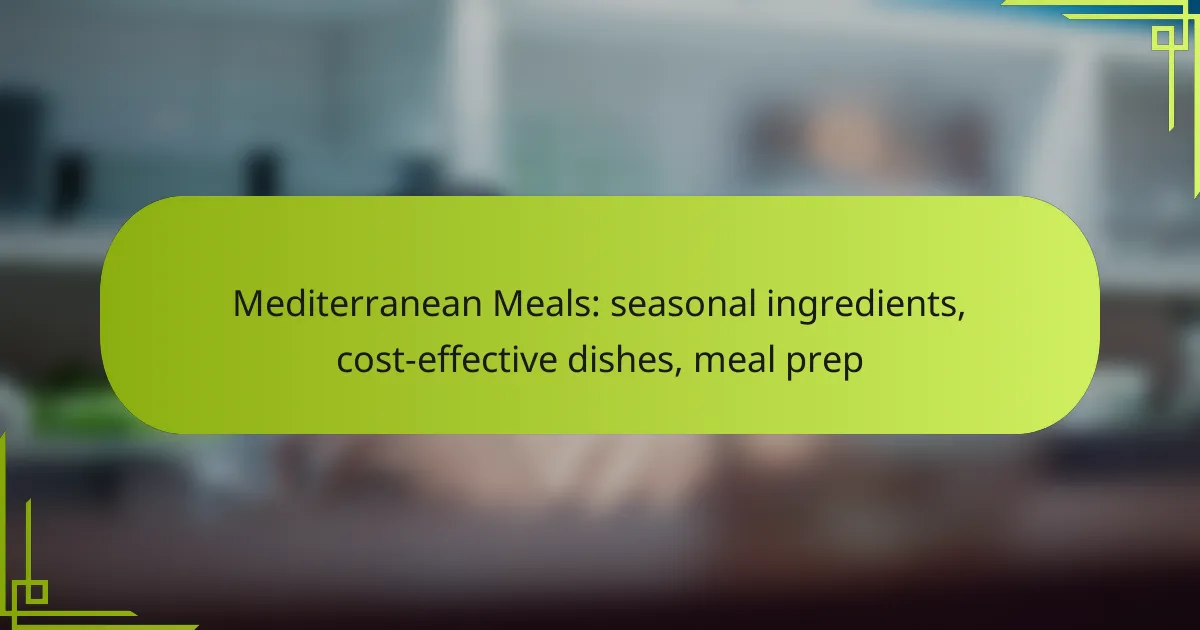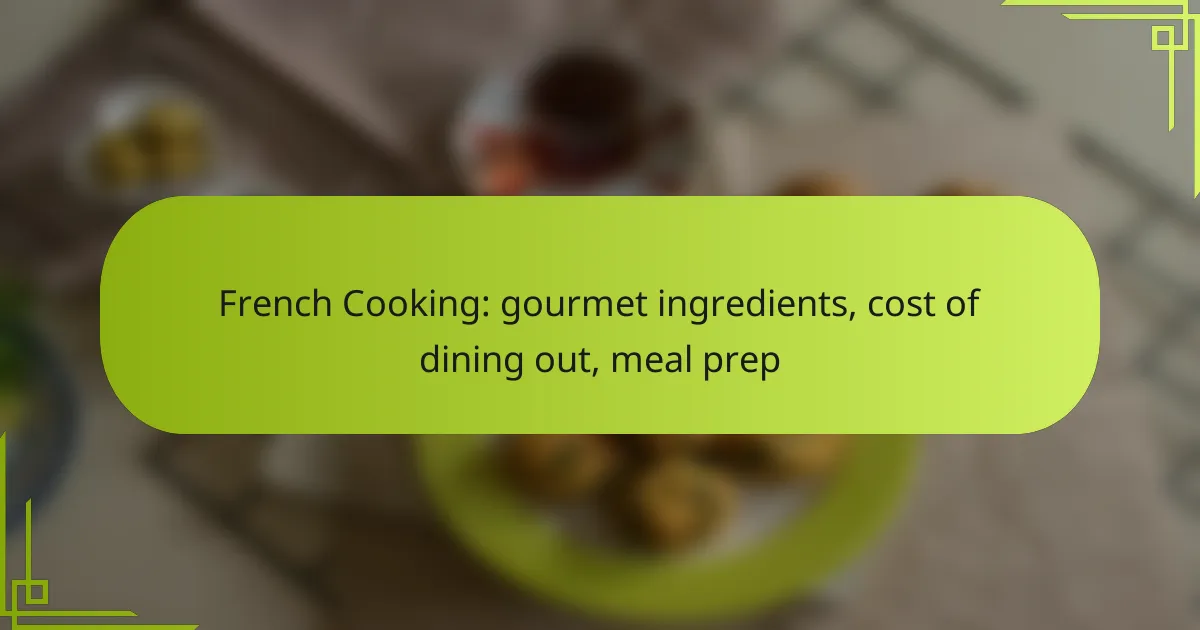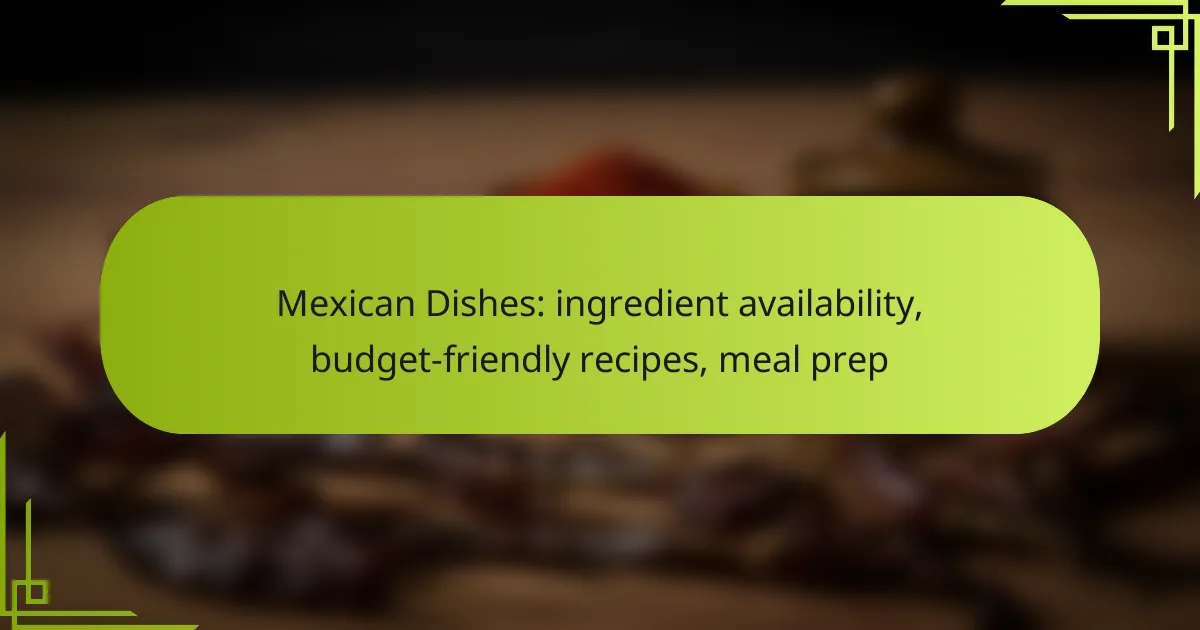Molecular gastronomy revolutionizes the culinary world by blending science with cooking, allowing chefs to enhance flavors and presentations through innovative techniques. By manipulating ingredients at a molecular level, methods such as spherification and emulsification create unique textures and flavor combinations, transforming traditional dining into a sensory experience. This approach not only elevates taste but also emphasizes artistic presentation, making each dish a visual masterpiece.
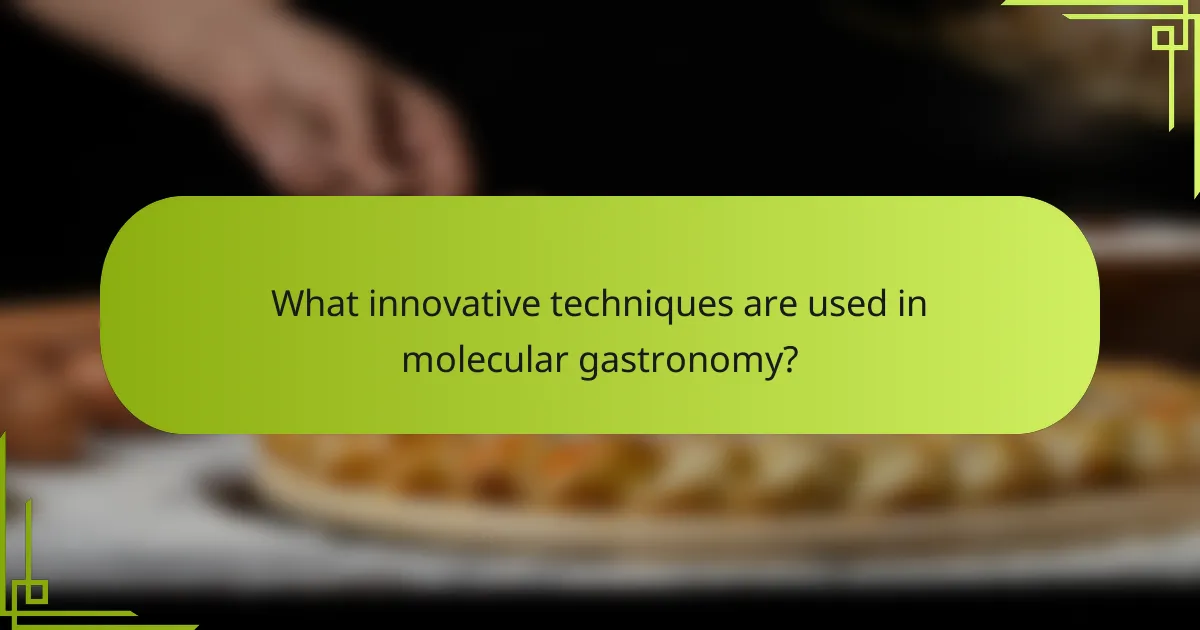
What innovative techniques are used in molecular gastronomy?
Molecular gastronomy employs innovative techniques that transform traditional cooking methods into scientific processes, enhancing flavors and presentations. Techniques such as spherification, foaming, gelification, emulsification, and deconstruction allow chefs to create unique dining experiences by manipulating textures and flavors.
Spherification
Spherification is a technique that creates small, caviar-like spheres filled with liquid, offering a burst of flavor when bitten. This is achieved by combining a liquid with sodium alginate and dropping it into a calcium bath, causing the outer layer to gel while the inside remains liquid. Common applications include fruit juices or flavored sauces, making them visually appealing and interactive.
When experimenting with spherification, consider the viscosity of the liquid; thicker liquids may require additional adjustments to achieve the desired effect. Avoid using dairy products directly, as they can interfere with the gelling process.
Foaming
Foaming introduces air into liquids to create light, airy textures that enhance flavor delivery. This technique often utilizes a whipped cream dispenser or an immersion blender to incorporate air into flavored liquids, resulting in a stable foam. Examples include savory foams made from stocks or sweet foams from fruit purees.
For successful foaming, ensure the liquid has the right fat content and consider using stabilizers like lecithin to maintain structure. Avoid over-whipping, which can lead to a grainy texture.
Gelification
Gelification transforms liquids into gels using agents like agar-agar or gelatin, allowing chefs to create unique textures and forms. This technique can be used to make jellies, panna cotta, or even savory gels that can be sliced or molded. The choice between agar-agar and gelatin depends on the desired firmness and temperature stability.
When using gelification, pay attention to the setting temperature; agar-agar sets at room temperature, while gelatin requires cooling. Experiment with different concentrations to achieve the perfect firmness for your dish.
Emulsification
Emulsification combines two immiscible liquids, such as oil and water, into a stable mixture, enhancing flavor and texture. Techniques like using a blender or whisking vigorously can create emulsions like vinaigrettes or mayonnaise. Emulsifiers, such as egg yolks or mustard, help stabilize the mixture.
To achieve a successful emulsion, add the oil slowly to the water phase while mixing continuously. Avoid adding too much oil at once, as this can cause the emulsion to break. Experiment with different emulsifiers to find the best flavor and texture for your dish.
Deconstruction
Deconstruction involves breaking down traditional dishes into their fundamental components, allowing for creative reinterpretation. This technique highlights individual flavors and textures, enabling chefs to present familiar dishes in new ways. For instance, a classic caprese salad can be deconstructed into separate elements like tomato gel, mozzarella foam, and basil oil.
When deconstructing a dish, focus on the key flavors and textures that define it. Consider how to present each element in a visually appealing manner, and be mindful of balancing flavors to maintain the essence of the original dish.
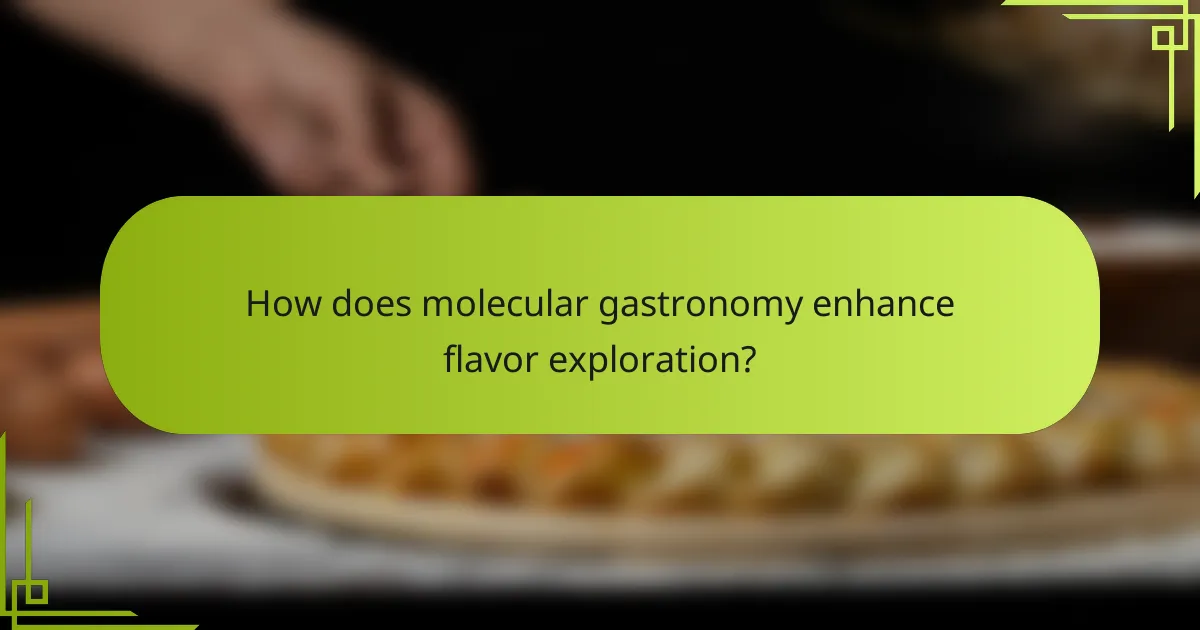
How does molecular gastronomy enhance flavor exploration?
Molecular gastronomy enhances flavor exploration by employing scientific techniques to manipulate ingredients at a molecular level, resulting in unique taste experiences. This innovative approach allows chefs to discover new flavor combinations, textures, and presentations that elevate traditional culinary practices.
Flavor pairing principles
Flavor pairing principles focus on combining ingredients that share similar flavor compounds, enhancing overall taste. For instance, pairing chocolate with chili is effective because both contain similar aromatic compounds, creating a harmonious blend. Chefs can experiment with unconventional pairings, such as strawberries and balsamic vinegar, to uncover surprising yet delightful combinations.
When exploring flavor pairings, consider using tools like flavor wheels or databases that categorize ingredients based on their flavor profiles. This can help identify potential matches that may not be immediately obvious, expanding the culinary repertoire.
Texture modification
Texture modification involves altering the physical properties of food to create new mouthfeel experiences. Techniques such as spherification, where liquids are encapsulated into gel-like spheres, can transform a simple fruit juice into a burst of flavor. Similarly, foaming agents can create light, airy textures that enhance the dining experience.
To effectively modify textures, chefs should experiment with various agents like agar-agar, gelatin, or lecithin, keeping in mind the desired outcome. Balancing texture with flavor is crucial; for example, a crunchy topping can add contrast to a creamy base, enhancing the overall dish.
Aromatics integration
Aromatics integration is the process of incorporating scents into dishes to amplify flavor perception. Techniques such as smoking, infusing, or using aromatic oils can significantly enhance the olfactory experience, making flavors more pronounced. For example, using smoked salt can add depth to a dish without overwhelming the primary ingredients.
Chefs should consider the timing of aromatic integration, as some scents are best introduced during cooking, while others may be added just before serving to preserve their potency. Experimenting with different aromatic sources, such as herbs, spices, or even essential oils, can lead to innovative flavor profiles that surprise and delight diners.

What unique presentations are common in molecular gastronomy?
Molecular gastronomy often features innovative presentations that transform the dining experience into a visual and sensory journey. Techniques such as artistic plating, the use of edible films, and visual illusions create dishes that are not only flavorful but also visually striking.
Plating techniques
Plating techniques in molecular gastronomy emphasize aesthetics and creativity, turning each dish into a work of art. Chefs may use asymmetrical arrangements, layering, and negative space to enhance visual appeal. For instance, a dish might feature a vibrant sauce splashed artistically on the plate, accompanied by carefully placed components that draw the eye.
Consider using tools like squeeze bottles or spoons for precise sauce application. Experimenting with height by stacking ingredients can also add dimension to the presentation. Avoid overcrowding the plate, as simplicity often leads to a more elegant look.
Use of edible films
Edible films are thin layers made from various ingredients that can encapsulate flavors or create unique textures. These films can be made from gelatin, starch, or even fruit purees, allowing chefs to add an interactive element to the dining experience. For example, a dish might feature a delicate film that bursts in the mouth, releasing a concentrated flavor.
When incorporating edible films, consider the flavors and textures that will complement your dish. Ensure that the film is easy to consume and does not overpower the main ingredients. Testing different thicknesses can help achieve the desired mouthfeel and visual effect.
Visual illusions
Visual illusions in molecular gastronomy play with perception, often surprising diners with unexpected presentations. Techniques such as using foams, gels, or smoke can create a sense of intrigue and elevate the dining experience. For instance, a dish might appear to be a traditional dessert but reveal a savory flavor profile upon tasting.
To create visual illusions, consider the use of contrasting colors and unexpected shapes. Incorporating elements like dry ice for smoke effects can enhance the sensory experience. However, ensure that the illusion does not compromise the dish’s flavor integrity, as the primary goal remains to delight the palate.
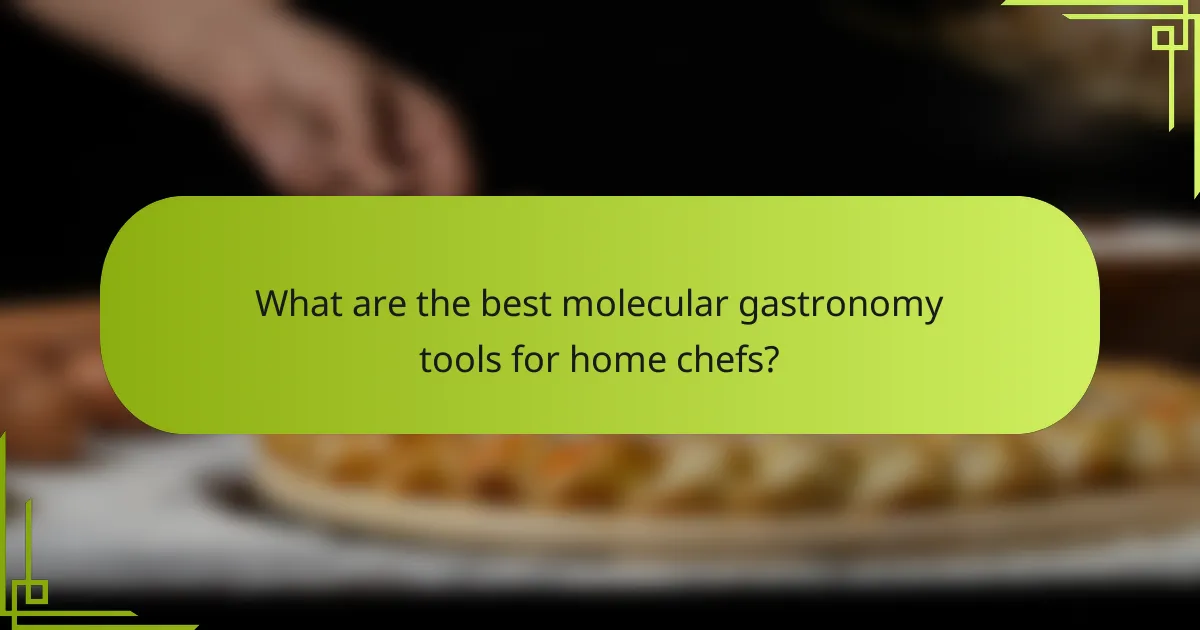
What are the best molecular gastronomy tools for home chefs?
The best molecular gastronomy tools for home chefs include sous-vide precision cookers, whipping siphons, and liquid nitrogen canisters. These tools enable innovative cooking techniques that enhance flavors and presentations, allowing chefs to explore new culinary possibilities.
Sous-vide precision cookers
Sous-vide precision cookers allow chefs to cook food in a water bath at controlled temperatures, resulting in perfectly cooked dishes. This method typically involves sealing food in vacuum bags and immersing them in water heated to a specific temperature, often ranging from 50°C to 85°C, depending on the desired doneness.
When using a sous-vide cooker, ensure that you have a reliable vacuum sealer and a thermometer to monitor water temperature. Avoid overcrowding the water bath to maintain consistent heat distribution. A common pitfall is not allowing enough time for cooking; thicker cuts may require several hours to achieve optimal tenderness.
Whipping siphons
Whipping siphons are versatile tools that can create foams, mousses, and whipped creams by infusing gas into liquids. They work by using nitrous oxide cartridges to aerate the mixture, resulting in a light and airy texture that enhances presentation and flavor.
To use a whipping siphon, fill it with your desired liquid, charge it with a nitrous oxide cartridge, and shake it to mix. Be cautious with the amount of liquid; overfilling can prevent proper aeration. Common mistakes include not shaking enough or using the wrong type of liquid, which can affect the final texture.
Liquid nitrogen canisters
Liquid nitrogen canisters are used to rapidly freeze ingredients, creating unique textures and presentations. This tool is particularly popular for making ice creams and sorbets in seconds, as well as for creating dramatic presentations with fog effects.
When using liquid nitrogen, ensure you have proper safety equipment, such as gloves and goggles, to prevent frostbite. Pour the nitrogen slowly over the ingredients to avoid splashing. A key consideration is to use it in well-ventilated areas, as nitrogen vapor can displace oxygen. Avoid consuming liquid nitrogen directly, as it can cause serious harm.

What are the prerequisites for starting molecular gastronomy?
To start molecular gastronomy, you need a solid foundation in basic cooking techniques and an understanding of food science. These prerequisites will enable you to experiment safely and creatively with innovative culinary methods.
Understanding basic cooking techniques
Basic cooking techniques form the backbone of molecular gastronomy. Skills such as sautéing, roasting, and emulsifying are essential, as they provide the necessary experience to manipulate ingredients effectively. Familiarity with these methods allows you to apply molecular techniques more confidently.
Additionally, understanding knife skills and food preparation methods can enhance your efficiency in the kitchen. For instance, knowing how to properly chop vegetables or prepare stocks can save time and improve the quality of your dishes.
Familiarity with food science
A grasp of food science is crucial for molecular gastronomy, as it involves the chemical and physical transformations of ingredients. Understanding concepts like spherification, gelification, and foaming can help you create unique textures and flavors. This knowledge allows you to predict how different ingredients will react under various conditions.
To deepen your understanding, consider studying the properties of common ingredients used in molecular gastronomy, such as agar-agar, lecithin, and sodium alginate. Experimenting with these substances can lead to innovative presentations and flavor combinations that elevate your culinary creations.
